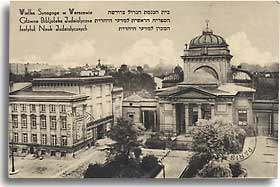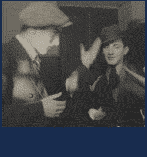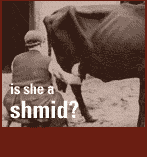

Institutions
Warsaw's Jews had an intricate network of institutions serving the community at all levels: welfare organizations, synagogues, hospitals, homes for the elderly, orphanages, burial societies, and providing other community necessities not guaranteed by the ever-changing political authorities. As with all concentrated Jewish communities in Poland, the city once relied on a highly structured kehillah  , a formal organization of rabbis, lay-leaders, and dayyanim
, a formal organization of rabbis, lay-leaders, and dayyanim  (judges) mediating between Jews and the larger Polish government.
(judges) mediating between Jews and the larger Polish government.
The city's most opulent synagogue and best-known Jewish landmark was the Great Synagogue on Tlomackie Street, a daunting Greco-Roman structure completed in 1878, designed by wealthy, culturally assimilated Jews as a nod toward the Russian monarchy.


The city's most opulent synagogue and best-known Jewish landmark was the Great Synagogue on Tlomackie Street, a daunting Greco-Roman structure completed in 1878, designed by wealthy, culturally assimilated Jews as a nod toward the Russian monarchy.
The synagogue seated 1,100 people and, like the German synagogue, featured an Orthodox liturgy with modern accents, including prayer books translated into Polish. After the Warsaw Ghetto Uprising  in 1943, the Nazis destroyed the building as a public display of their power and ideology, declaring that the Jewish community was no more. During the long history of Orthodox and Hasidic religious centrality, the traditional model of schooling held sway: kheyder
in 1943, the Nazis destroyed the building as a public display of their power and ideology, declaring that the Jewish community was no more. During the long history of Orthodox and Hasidic religious centrality, the traditional model of schooling held sway: kheyder  for small boys, yeshivot
for small boys, yeshivot  for young men. During the mid-19th century, 90 percent of Warsaw's Jewish children attended kheyder, of which there were hundreds in the city. These kheydorim provided basic instruction in Hebrew and Jewish prayer, using Yiddish as the language of communication. Among reformers, these schools were seen as dated and inadequate, being notorious for bad hygiene and cramped quarters. As in centuries past, the yeshiva served as higher education for selected young men delving further into study of Talmud and Jewish law. Gradually, however, as the general break-up of Orthodox prominence took hold in the late-19th century, new schools began to appear: from an Orthodox girls' schools known as Beis Yakov
for young men. During the mid-19th century, 90 percent of Warsaw's Jewish children attended kheyder, of which there were hundreds in the city. These kheydorim provided basic instruction in Hebrew and Jewish prayer, using Yiddish as the language of communication. Among reformers, these schools were seen as dated and inadequate, being notorious for bad hygiene and cramped quarters. As in centuries past, the yeshiva served as higher education for selected young men delving further into study of Talmud and Jewish law. Gradually, however, as the general break-up of Orthodox prominence took hold in the late-19th century, new schools began to appear: from an Orthodox girls' schools known as Beis Yakov  to Yiddish schools, and including Russian and Polish state schools, along with modern Hebrew-language schools and trade schools.
to Yiddish schools, and including Russian and Polish state schools, along with modern Hebrew-language schools and trade schools.














